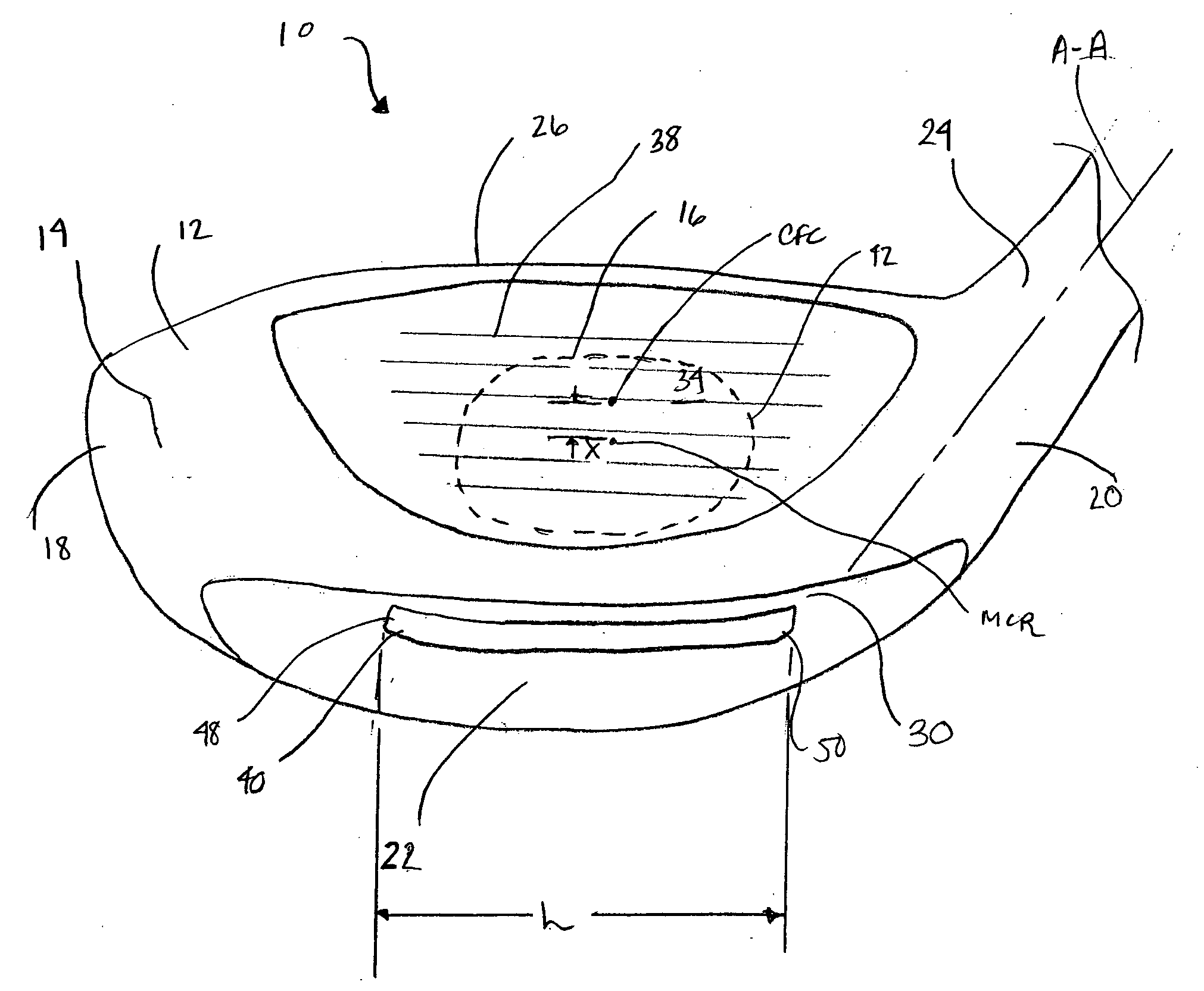Metal wood club
a golf club and metal wood technology, applied in the field of golf club heads, can solve the problems of inability to meet the needs of golf clubs, the face of golf clubs has been steadily becoming extremely thin, and the golf equipment manufacturer cannot control the environmental effects, so as to increase the launch angle of the golf ball, increase the carry distance of the ball, and increase the speed of the golf ball rebounds
- Summary
- Abstract
- Description
- Claims
- Application Information
AI Technical Summary
Benefits of technology
Problems solved by technology
Method used
Image
Examples
Embodiment Construction
[0035] COR or coefficient of restitution is a measure of collision efficiency. COR is the ratio of the velocity of separation to the velocity of approach. In this model, therefore, COR was determined using the following formula:
(vclub-post−vball-post) / (vball-pre−vclub-pre)
where, [0036] vclub-post represents the velocity of the club after impact; [0037] vball-post represents the velocity of the ball after impact; [0038] vclub-pre represents the velocity of the club before impact (a value of zero for USGA COR conditions); and [0039] vball-pre represents the velocity of the ball before impact.
[0040] COR, in general, depends on the shape and material properties of the colliding bodies. A perfectly elastic impact has a COR of one (1.0), indicating that no energy is lost, while a perfectly inelastic or perfectly plastic impact has a COR of zero (0.0), indicating that the colliding bodies did not separate after impact resulting in a maximum loss of energy. Consequently, high COR values...
PUM
 Login to View More
Login to View More Abstract
Description
Claims
Application Information
 Login to View More
Login to View More - R&D
- Intellectual Property
- Life Sciences
- Materials
- Tech Scout
- Unparalleled Data Quality
- Higher Quality Content
- 60% Fewer Hallucinations
Browse by: Latest US Patents, China's latest patents, Technical Efficacy Thesaurus, Application Domain, Technology Topic, Popular Technical Reports.
© 2025 PatSnap. All rights reserved.Legal|Privacy policy|Modern Slavery Act Transparency Statement|Sitemap|About US| Contact US: help@patsnap.com



